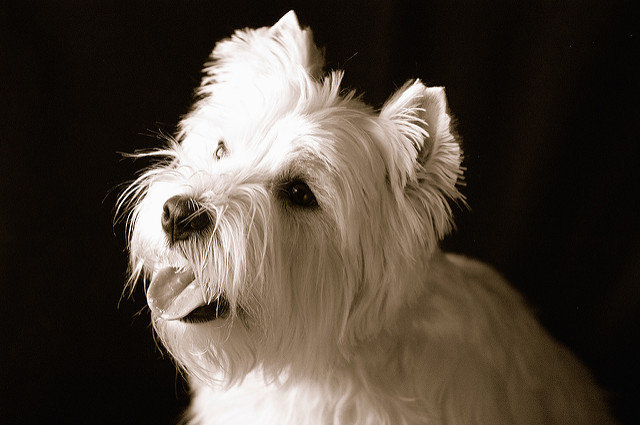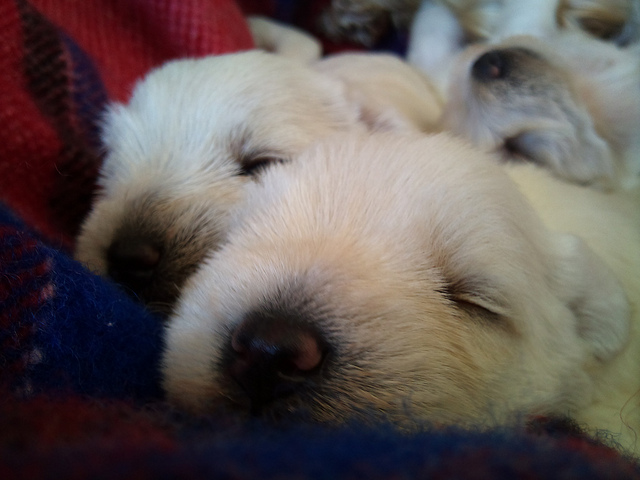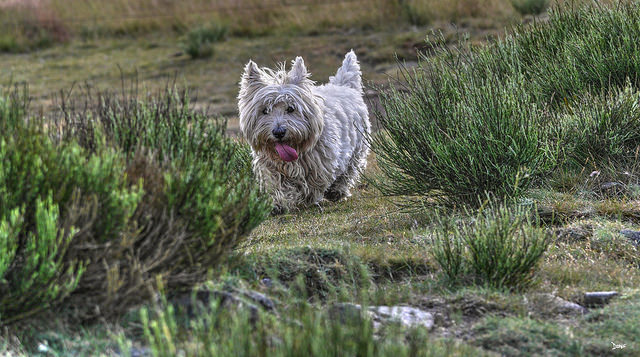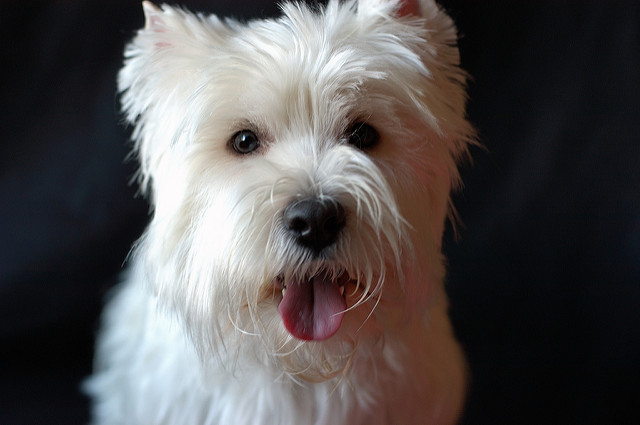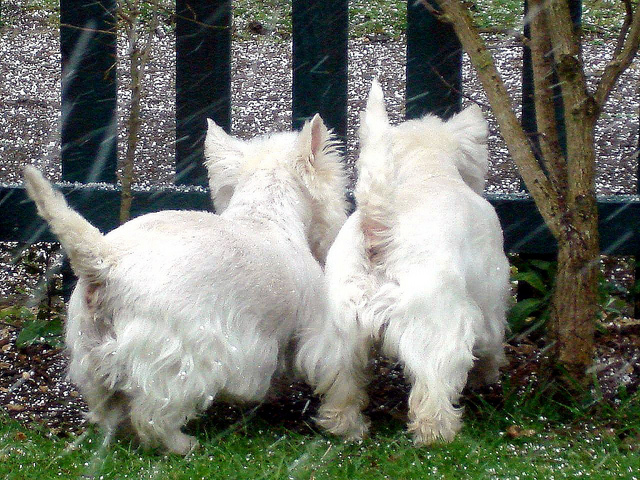Through the years, the West Highland White Terrier has been known by several different names, including the Highlander, the Westie, the Roseneath Terrier, the West Highlander, and the Polalloch Terrier. This breed is known for its devotion, spunk, and determination, which makes these dogs great pets. They are lighthearted and happy, yet they have a devotion to their owners that makes the breed stand out. Westies enjoy digging, they like to chase things, and they do require some restraint and supervision. Here’s a closer look at West Highland White Terriers, their appearance, temperament, health considerations, and more.
Origin and History
It’s thought that the West Highland White Terrier is closely related to many of the other terriers from Scotland, such as the Skye, Dandie Dinmont, Cairn, and Scottish. This breed was developed to be a working dog, going to ground to eliminate foxes, rabbits, badgers, and rats. According to Legend, Colonel Malcolm worked to develop the white Westie after accidentally shooting a favorite brown terrier by mistaking the dog for a fox. Eventually he was able to create terriers that were pure white while staying true to function, temperament, and type.
West Highland White Terriers were first shown under the modern name at the Scottish Kennel Club dog show in 1904. A few years later, England’s Kennel Club would recognize the modern breed name. The very first dog that was registered officially as a “West Highland White Terrier” was an imported female known as Sky Lady.
In or around 1905, the first West Highland White Terrier was thought to come to America. Later in 1908 the breed would be recognized by the AKC as the Roseneath Terrier. However, in 1909 the name of the breed was changed to the West Highland White Terrier within the United States. The Westie quickly became one of the most popular breeds by the end of the 20th century.
Appearance
The appearance of the West Highland White Terrier grabs attention, since these small dogs feature a black button nose and a completely white coat. They have a round, wide skull and a blunt muzzle that is a bit shorter than their skull. These dogs have intelligent, keen, dark eyes, and they have either a level or scissors bite. Their ears are erect, wide-set, and they sit on the side of the dog’s skull. They have a level topline and the dogs are a bit longer than they are tall.
West Highland White Terriers have a double coat that is weatherproof, and it’s made up of a long topcoat that is about two inches long, as well as a short, dense undercoat. However, these dogs should only be white in color. Mature males are generally about 11 inches at their shoulder, while the average female is about 10 inches at the shoulder. The average male weight is about 18 pounds, while the average female weighs about 15 pounds.
West Highland White Terrier Temperament
Westies are spunky, tenacious, curious, self assured, and fearless. These dogs need plenty of play time and walks, and they enjoy being involved with all the activity in a home. Since they are so curious, it’s common for a West Highland White Terrier to get into everything, from cabinets to closets. These dogs make great watchdogs, since they bark at nearly every noise that they hear. Since the breed continues to have a desire to hunt rodents, they’ll definitely keep the property free from pests, although the dog may present the “prizes” to you after catching it. Since these dogs get along well with other pets and older children, they are great companions for many families.
West Highland White Terriers do have an independent, stubborn streak, and they don’t particularly like being told what they can do. This makes them a bit more difficult to train. Make sure to be prepared with plenty of treats to keep your Westie motivated when training, and it’s important to keep training sessions varied and short, since these dogs are easily distracted. Avoid using a heavy hand on this bread, since they may bite or snap if they start to feel threatened. This breed should be socialized with people and other animals very early, since they may become more aggressive if they are not socialized at a young age.
Grooming
To keep a Westland Highland White Terrier looking neat, it’s important to regularly trim and brush the coat to keep it healthy. If the dog is going to be shown, the dog should be stripped a couple times each year, although non-show dogs have no need to go through being stripped. It’s essential to trim around the eyes, ears, and feet. Since the coat doesn’t shed a lot or get very dirty, you only need to bath a Westie as needed. However, to keep the coat looking clean and white between those baths, it’s a good idea to use a bathing wipe or a damp cloth for regular wipe-downs.
The ears of Westland Highland White Terriers should be checked each week for wax buildup, irritation, and infection. A cotton ball and veterinarian approved cleaning agent can be used to clean the ears regularly. The teeth need to be brushed a minimum of once each week and it’s important to trim the nails at least once each month if the toenails aren’t naturally worn down.
Working Roles
Originally these dogs were bred to work at finding small animals, such as foxes, rabbits, and rats. However, since they are such friendly, obedient dogs, they often are used as service dogs and therapy dogs today. West Highland White Terriers have also been featured in film and on television on shows and in movies such as The Adventures of Greyfriars Bobby, Lethal Weapon 3, and Jeeves and Wooster.
Health
The West Highland White Terrier usually lives to be between 12 and 14 years old. Some of the common health concerns for the breed include:
- Pyruvate kinase deficiency
- Epidermal dysplasia
- White shaker dog syndrome
- Pulmonic stenosis
- Copper toxicosis
- Legg-Calve-Perthes disease
- Globoid cell leukodystrophy
- Corneal ulceration
- Ectopic ureters
- Congenial deafness
- Hepatitis
- Cataracts
- Keratoconjunctivitis sicca
- Generalized demodicosis

